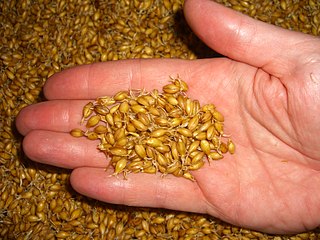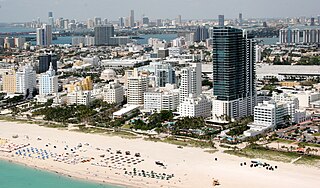
The Exxon Valdez oil spill occurred in Prince William Sound, Alaska, March 24, 1989, when Exxon Valdez, an oil tanker owned by Exxon Shipping Company, bound for Long Beach, California, struck Prince William Sound's Bligh Reef, 1.5 mi (2.4 km) west of Tatitlek, Alaska, at 12:04 a.m. local time and spilled 10.8 million US gallons (260,000 bbl) of crude oil over the next few days. It is considered to be one of the worst human-caused environmental disasters. The Valdez spill is the second largest in US waters, after the 2010 Deepwater Horizon oil spill, in terms of volume released. Prince William Sound's remote location, accessible only by helicopter, plane, or boat, made government and industry response efforts difficult and severely taxed existing response plans. The region is a habitat for salmon, sea otters, seals and seabirds. The oil, originally extracted at the Prudhoe Bay Oil Field, eventually affected 1,300 miles (2,100 km) of coastline, of which 200 miles (320 km) were heavily or moderately oiled.

Malt is germinated cereal grain that has been dried in a process known as "malting". The grain is made to germinate by soaking in water and is then halted from germinating further by drying with hot air. Malting grain develops the enzymes required for modifying the grain's starches into various types of sugar, including monosaccharide glucose, disaccharide maltose, trisaccharide maltotriose, and higher sugars called maltodextrines. It also develops other enzymes, such as proteases, which break down the proteins in the grain into forms that can be used by yeast. The point at which the malting process is stopped affects the starch to enzyme ratio and partly converted starch becomes fermentable sugars. Malt also contains small amounts of other sugars, such as sucrose and fructose, which are not products of starch modification but which are already in the grain. Further conversion to fermentable sugars is achieved during the mashing process.
Propane is a three-carbon alkane with the molecular formula C3H8. It is a gas at standard temperature and pressure, but compressible to a transportable liquid. A by-product of natural gas processing and petroleum refining, it is commonly used as a fuel. Propane is one of a group of liquefied petroleum gases (LP gases). The others include butane, propylene, butadiene, butylene, isobutylene, and mixtures thereof.

A marshmallow is a sugar-based confectionery that in its modern form typically consists of sugar, water and gelatin whipped to a squishy consistency, molded into small cylindrical pieces, and coated with corn starch. Some marshmallow recipes call for eggs. This is the modern version of a medicinal confection made from Althaea officinalis, the marshmallow plant.

Glycerol is a simple polyol compound. It is a colorless, odorless, viscous liquid that is sweet-tasting and non-toxic. The glycerol backbone is found in many lipids which are known as glycerides. It is widely used in the food industry as a sweetener and humectant in pharmaceutical formulations. Glycerol has three hydroxyl groups that are responsible for its solubility in water and its hygroscopic nature.

A water slide is a type of slide designed for warm-weather or indoor recreational use at water parks. Water slides differ in their riding method and therefore size. Some slides require riders to sit directly on the slide, or on a raft or tube designed to be used with the slide.

A dehumidifier is an electrical appliance which reduces and maintains the level of humidity in the air, usually for health or comfort reasons, or to eliminate musty odor and to prevent the growth of mildew by extracting water from the air. It can be used for household, commercial, or industrial applications. Large dehumidifiers are used in commercial buildings such as indoor ice rinks and swimming pools, as well as manufacturing plants or storage warehouses.

Aura is a multi-national NASA scientific research satellite in orbit around the Earth, studying the Earth's ozone layer, air quality and climate. It is the third major component of the Earth Observing System (EOS) following on Terra and Aqua. Aura follows on from the Upper Atmosphere Research Satellite (UARS). Aura is a joint mission between NASA, the Netherlands, Finland, and the U.K. The Aura spacecraft is healthy and is expected to operate until at least 2022, likely beyond.

Aqua is a NASA scientific research satellite in orbit around the Earth, studying the precipitation, evaporation, and cycling of water. It is the second major component of the Earth Observing System (EOS) preceded by Terra and followed by Aura.

Water damage describes a large number of possible losses caused by water intruding where it will enable attack of a material or system by destructive processes such as rotting of wood, growth, rusting of steel, de-laminating of materials such as plywood, and many others.

Water content or moisture content is the quantity of water contained in a material, such as soil, rock, ceramics, crops, or wood. Water content is used in a wide range of scientific and technical areas, and is expressed as a ratio, which can range from 0 to the value of the materials' porosity at saturation. It can be given on a volumetric or mass (gravimetric) basis.
An atmospheric water generator (AWG) is a device that extracts water from humid ambient air. Water vapor in the air can be extracted by condensation - cooling the air below its dew point, exposing the air to desiccants, or pressurizing the air. Unlike a dehumidifier, an AWG is designed to render the water potable. AWGs are useful where pure drinking water is difficult or impossible to obtain, because there is almost always a small amount of water in the air that can be extracted. The two primary techniques in use are cooling and desiccants.

Devon and Somerset Fire and Rescue Service is the statutory fire and rescue service covering the county of Devon and the non-metropolitan county of Somerset in South West England. The service does not cover the unitary authorities of North Somerset and Bath and North East Somerset, which are covered by the Avon Fire and Rescue Service. It is the fifth largest fire and rescue service in the United Kingdom.

The process of assembling the International Space Station (ISS) has been under way since the 1990s. Zarya, the first ISS module, was launched by a Proton rocket on 20 November 1998. The STS-88 shuttle mission followed two weeks after Zarya was launched, bringing Unity, the first of three node modules, and connecting it to Zarya. This bare 2-module core of the ISS remained unmanned for the next one and a half years, until in July 2000 the Russian module Zvezda was launched by a Proton rocket, allowing a maximum crew of two astronauts or cosmonauts to be on the ISS permanently.

Cadmium telluride (CdTe) photovoltaics describes a photovoltaic (PV) technology that is based on the use of cadmium telluride, a thin semiconductor layer designed to absorb and convert sunlight into electricity. Cadmium telluride PV is the only thin film technology with lower costs than conventional solar cells made of crystalline silicon in multi-kilowatt systems.

An air well or aerial well is a structure or device that collects water by promoting the condensation of moisture from air. Designs for air wells are many and varied, but the simplest designs are completely passive, require no external energy source and have few, if any, moving parts.

The International Space Station Environmental Control and Life Support System (ECLSS) is a life support system that provides or controls atmospheric pressure, fire detection and suppression, oxygen levels, waste management and water supply. The highest priority for the ECLSS is the ISS atmosphere, but the system also collects, processes, and stores waste and water produced and used by the crew—a process that recycles fluid from the sink, shower, toilet, and condensation from the air. The Elektron system aboard Zvezda and a similar system in Destiny generate oxygen aboard the station. The crew has a backup option in the form of bottled oxygen and Solid Fuel Oxygen Generation (SFOG) canisters. Carbon dioxide is removed from the air by the Russian Vozdukh system in Zvezda, one Carbon Dioxide Removal Assembly (CDRA) located in the U.S. Lab module, and one CDRA in the U.S. Node 3 module. Other by-products of human metabolism, such as methane from the intestines and ammonia from sweat, are removed by activated charcoal filters or by the Trace Contaminant Control System (TCCS).
A Water pyramid or WaterPyramid is a village-scale solar still, designed to distill water using solar energy for remote communities without easy access to clean, fresh water. It provides a means whereby communities can produce potable drinking water from saline, brackish or polluted water sources.

The malting process converts raw grain into malt. The malt is mainly used for brewing or whisky making, but can also be used to make malt vinegar or malt extract. Various grains are used for malting; the most common are barley, sorghum, wheat and rye. There are a number of different types of equipment that can be used to produce the malt. A traditional floor malting germinates the grains in a thin layer on a solid floor, and the grain is manually raked and turned to keep the grains loose and aerated. In a modern malt house the process is more automated, and the grain is germinated on a floor that is slotted to allow air to be forced through the grain bed. Large mechanical turners e.g. Saladin box, keep the much thicker bed loose with higher productivity and better energy efficiency.
Evelyn N. Wang is a mechanical engineer at the Massachusetts Institute of Technology (MIT), where she is the Gail E. Kendall (1978) Professor of Mechanical Engineering, director of the Device Research Laboratory, and chair of the Department of Mechanical Engineering. Topics in her research include heat transfer, ultrahydrophobicity, solar energy and nanostructures.



















